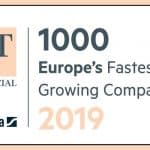How digitalisation of procurement has affected global supply chains

Summary
The world of automation technology is in a constant uptrend and it is simplifying the business approach to stakeholder management. With the right software in place, there are a variety of uses and features of digitalisation of procurement. Outlining modern-day supply chain disruptions allows for the benefits offered by the digitalisation of procurement to be highlighted. Businesses must also keep in mind the need for digitalisation, trends in automation within the industry, competitor behaviour, the long-term view of digitalisation in procurement, finance availability, economic conditions, and the rise of industry 4.0 as considerations during the process of digitising procurement.
The digitalisation of procurement processes has resulted in a revolutionary leap in business processes—simplifying activities, reducing costs, and improving stakeholder connectivity. This has resulted in businesses gaining the ability to benefit from globalisation and localisation, enabling them to forgo opportunity costs and meet all their objectives.
Digital supply chains use centralised software to monitor, analyse, evaluate, track, and mobilise procurement activities. Data has shown that 70% of businesses that have adopted automated supply chains have seen a significant improvement in their procurement function.
What are the features of the digitalisation of procurement?
Nowadays, there is so much that can be delegated to automation and this is taking weight off some processes and creating a balanced dynamic between inputs, processes, and outputs.
When selecting a medium for digitalising your procurement process, it is important to consider that automation software offers a variety of functions.
Some of these functions and features include:
- Centralisation
- Integration
- Personalisation
- Report compilation
- Flexibility
As a platform that encourages centralisation and concords integration, it connects the entire organisation under one platform. When all stakeholders are under one roof, it eliminates a wide variety of potential discrepancies and saves a lot of time.
Personalisation and customisation are also some of the most impactful features as they tie the stakeholders into a common environment.
Automated systems are very diverse in reporting and quantitative analysis, which allows businesses to inform their decisions and objectives from this data.
Digitalisation is most often a fear of stakeholders because it requires a well-established mindset that understands change. It is important for businesses to keep them comfortable, which can be done by having accessible systems that will not create a feeling of inferiority to stakeholders.
What are modern-day disruptions?
Data has shown that a large 76% of firms are interested in investing in supply chain visibility and automation. However, there are also newer disruptions to the global supply chain which require more structured strategies.
Below are some modern-day disruptions in the supply chain:
- Cascading global economic conditions
The majority of countries are still recovering from the global pandemic. Many have gone out of business—facing a lack of resources and heightened costs of being in business. With many countries seeing tough times, monetary policies have tightened, causing new rules and regulations to often act adversely with business objectives.
- Geopolitical and economic disruptions
Wars and discrepancies within countries have resulted in broken supply chains around the world, which is creating scarcities and escalating costs. This has resulted in high shipping costs, skyrocketing fuel costs, and food shortages.
- Labour supply shortages
Some countries are unable to meet labour market demand because of migration. There is a massive shift in the workforce, which has caused shortages in aviation, shipping crews and logistics. Furthermore, the world is moving towards an aging population which is also causing large volumes of brain drain.
- Risk of cyber attacks
With supply chains moving towards digitalisation, there are potential risks of leveraging confidential and a bulk of information within databases in terms of cyber threats. This can potentially harm the flow of procurement as well.
The benefits offered by the digitalisation of procurement
Digitalising supply chain processes has revamped the outlook of demand and supply for both businesses and consumers. Data has shown that 85% of global supply chains have experienced a minimum of one disruption due to a lack of digital systems.
Digitalisation in procurement has increased competition. The creation of competition is healthy for global supply chains because it results in positive of economies of scale and prompts a maximum price control on what is offered. Statistics have shown that automation in the supply chain has reduced procurement costs by an average of 3% to 10%.
The digitalisation of procurement processes enable collaborative effort and renewed relationships with stakeholders. Data has brought to light that automation can reduce supply chain errors by up to 66%. When the procurement process is digitalised it offers more transparency and visibility across the board, allowing firms to monitor and analyse supplier response whilst also being able to identify and cater to the needs of consumers.
Cost and wastage are significantly reduced in line with competition and transparency. When firms can see the exact happenings in the procurement process, leverage data analytics, and study their stakeholders, it increases efficiency and pushes accuracy across all levels in the hierarchy. Data has outlined that, technology can increase supply chain transaction efficiency by 50% and influence transaction costs by 30%.
Since digitalisation also places a focus on centralisation, it can increase the scope for a widened supplier base. Growth in the supplier base also results in smaller impacts from supply-side constraints.
What to consider during the process of digitalising procurement
Businesses have many considerations to make when implementing strategic processes such as digitalising procurement.
In this case, it is important to understand the need for digitalisation, trends in automation in your industry, moves made by competitors, the long-term view of digitalisation in procurement, financial feasibility, economic conditions, the present procurement process, the need for procurement 4.0, and how it can be revamped.



